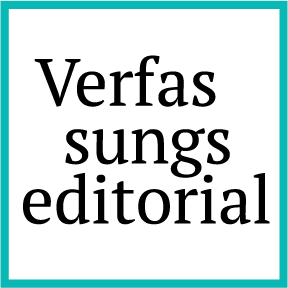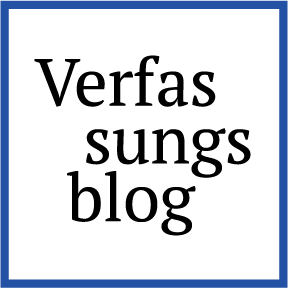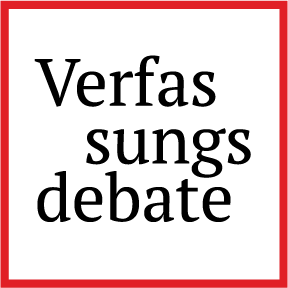Anti-Feminism versus Abusive Feminism
It is not an easy time to be a feminist, queer activist or anti-racist campaigner. Some of the world’s most powerful leaders have openly embraced an agenda that is overtly hostile to diversity, equity and inclusion (DEI): witness Donald Trump’s attack on DEI in American universities, the military and federal government, former Brazilian President Jair Bolsonaro’s attacks on women’s and gay rights, or Argentine President Milei’s attacks on “gender ideology”, DEI and “woke ideas” as a form of “cancer” in society.
These attacks involve a clear ideological hostility toward the idea of diversity and inclusion, but also a willingness to use law and the power of the purse to weaken commitments to DEI both in and outside the government. In many cases, they are also overtly anti-feminist – celebrating traditional notions of masculinity, suggesting that feminism represents a “distortion” of the idea of gender equality, indeed something that women and girls should be protected from, and that it is now (white) men who are discriminated against.
These discursive and behavioral attacks have been accompanied by a range of anti-feminist policy changes. As David Landau and I noted in our book, Abusive Constitutional Borrowing, liberalism and democracy often erode together (p. 23). Hence, it is no surprise that the growth of anti-feminism is associated with democratic backsliding. What is more surprising is that many of these anti-feminist, would-be autocrats have engaged in a parallel set of tactics that appear to endorse, rather than challenge, certain feminist ideas.
From anti to abusive feminism
This, however, is no accident: today’s would-be authoritarians are often sophisticated political operatives who understand how to advance an anti-democratic agenda while maintaining maximum international and domestic political support.
One way to quietly undermine democracy is to borrow the forms and norms of liberal democracy, while stripping them of substance. Doing so appeals to international funders and allies and democratic voters with reservations about overtly anti-democratic, anti-constitutional discourses and policies. Yet it costs these leaders almost nothing: while they may talk the language of liberalism and democracy, they apply it so superficially, selectively, acontextually or anti-purposively that it has almost no real capacity to advance actual liberal, democratic ideas.
This in fact defines the phenomenon of “abusive constitutional borrowing” – or use of liberal democratic ideas and forms to advance a project of eroding or undermining the “minimum core” of democracy (p. 23). In my article Abusive Feminism, I explore how these same dynamics can be applied to feminism – and in fact are, in many countries worldwide.
Anti-feminist, anti-democratic leaders are using the language of anti-feminism, illiberalism and authoritarianism to advance their ideas, but in the same breath the language or tropes of democracy and equality – including the language of women’s rights, and a commitment to the appointment of women as high-level executive officials and judges. This language and set of tropes, however, comes at little cost to the illiberal, anti-feminist project: it is not intended to lead to the substantive implementation of women’s rights, or to empowerment of independent feminist leadership. Rather, it is part of a project of superficial or selective implementation or rights, or else, the co-optation of female leaders into the anti-feminist, anti-democratic project.
Targets, yardsticks, and narrow versus broad variants
The most notable target of abusive feminism is the idea of women’s descriptive representation – or connection between feminist ideas and the idea that women should exercise positions of legal and political power. Placing women in high office reflects commitments to fairness, diversity and equality of opportunity. But it also creates opportunities for anti-feminist, would-be authoritarians to use women’s descriptive representation to advance and legitimate their own sexist, authoritarian projects – attacking what I call the “democratic minimum core” and the “feminist minimum core”.
One form of this involves placing women in prominent positions of power but co-opting them as allies in a project of attacking the democratic minimum core. This is the idea of abusive feminism in the narrow sense: as effectively a sub-species of “abusive constitutionalism”.1)
While the concept of democracy is often contested, and for good reason, almost all (reasonable) democratic theories include the idea that, at minimum if not maximum, true democracy requires: (i) regular, free and fair multi-party elections; (ii) political rights and freedoms and (iii) a set of institutional checks and balances necessary for (i) and (ii). This is the idea of the “democratic minimum core” (DMC).
Abusive feminism is somewhat broader, and involves the co-optation of female legal and political leaders in an effort to destroy feminism itself, or the feminist minimum core. Like democracy, the idea of feminism is contested. All feminists are committed to highlighting problems of gender injustice. But they often place different emphasis on what justice means, or to commitments to gender-based amelioration, transformation and disruption.2) Feminists also come from different traditions – including liberal, cultural, radical, agency and post-modern/post-structural traditions.3)
Overlaid with these differences is also the profound challenge of intersectionality – or accounting for the diverse nature of women’s experiences, and the overlapping and intersecting sources of domination, disadvantage, oppression and inequality faced by women of color, poor women, sexual minorities, young and old women and those with lived experience of disability.4) This is also not simply a matter of “adding” these identity categories to feminism: often diverse women experience the pull of multiple identity groups and categories that make it impossible to account for their experiences except via a truly intersectional account.5) This also poses challenges for any attempt to identify abusive feminism, or at least the variants of it that involve the weaponization of women’s rights and descriptive representation as a means of undermining gender equality itself.
But I suggest that while noting these challenges, the rise of abusive feminism requires us to advance – at least tentatively and provisionally – some yardstick for calling about abusive feminism, akin to the idea of the DMC. This is the idea of the “feminist minimum core” (FMC) I propose in Abusive Feminism, and which I suggest consists in a commitment to: “equal freedom and dignity for all women and interrogating the degree to which current legal, political, economic and social structures advance (or impede) access of this kind” (p. 492). I further suggest that this could be understood to entail at least some form of: (i) direct representation, (ii) legally guaranteed access to reproductive rights (i.e. contraception, abortion and maternal healthcare); (iii) economic security (including via parental leave and affordable childcare), and (iv) freedom from family and sexual violence.
Aspects of this definition are clearly open to contest: the idea of paid leave and affordable child-care, for example, is often challenged by social feminists as unduly replicating the logic of market-based capitalism, rather than moving toward a model of shared work and care.6) Other aspects are also open to challenge – on the grounds of both over- and under-inclusiveness.
Indeed, the language of “at least some form of” in the FMC is chosen advisedly. There are strong feminist arguments for (say) legislative gender quotas, broad legal access to abortion, state-funded childcare and parental leave and protections from sexual violence. But there is also scope for reasonable disagreement among feminists on these questions. Part of how we combat abusive feminism is through a truly intersectional approach to feminism. But this also makes it important to reject an essentialist conception of feminism, and embrace the scope for reasonable disagreement among feminisms.
For issues such as abortion, this also requires a somewhat limited notion of the FMC. For instance, it may be that any reasonable balance between women’s rights and fetal rights (or dignity) requires the state to grant legal access to abortion in circumstances of rape, incest, serious fetal impairment or threat to a woman’s life and mental or physical health. Doing so is arguably necessary to protect women’s dignity in the capabilities sense7), or women’s freedom from unreasonable burdens on their life, mental or physical health or control over the course of their life. But it does not necessarily extend to broad access to abortion on demand: here, there could be a reasonable (if problematic) argument that it is legitimate to restrict or at least regulate access to abortion in the interests of protecting the rights and dignity interests of the fetus.8)
A narrow FMC of this kind will be too narrow for many liberal and radical feminists. But a broader definition arguably undermines the idea of the DMC and FMC as capable of serving as a focal point for cross-partisan efforts to uphold democratic constitutional commitments.
Strong versus weak variants
Abusive feminism also involves stronger and weaker variants. As I note in Abusive Feminism, sometimes “women themselves may be the relevant actors seeking to deploy gender as a means of advancing anti-democratic or anti-egalitarian ends”. This is abusive feminism in the strong sense – and linked to women as elected leaders (as for example in Argentina and Italy) intentionally working to undermine either the DMC or FMC.
But in other cases, I suggest, “women may be the instruments of efforts by male leaders to advance those ends – or the objects rather than agents of abusive feminism”. This is a form of abusive feminism in the weak as opposed to strong sense, and involves an adverse impact rather than intent on the part of women to undermine the DMC or FMC.
The difference is, of course, one of degree: as Penteado notes, even women and minorities appointed for “tokenistic” purposes retain some degree of agency. The question is how to enhance that agency as a means of resisting rather than furthering a project of abusive constitutionalism, or anti-feminist change.
But noting the difference between weak and strong forms of abusive feminism (and constitutionalism) is still important. Both forms of abusive feminism are still just that – abusive, and corrosive of democracy and commitments to gender equality, and deserve to be called out as such. But that criticism should also be appropriately targeted – primarily at the men instrumentalizing gender for their own purposes, rather than the women who are the targets of those abusive tactics.
As I note in the article, the distinction can be captured in the following table or matrix.
Variants of Abusive Feminism
| Impacts | Yardstick | Degree of intent |
|---|---|---|
| Narrow/strong | Erosion of democratic minimum core | Intent standard |
| Broad/weak | Erosion of broader equality rights | Impact standard |
How might we tell the difference? Often, there will be limited direct evidence available as a guide. But as Landau and I note in diagnosing abusive constitutional borrowing, timing and context are often important (p. 496). Hence, one indicator of abusive feminism is that it often involves the use of feminist language (or ideas) by leaders with a personal track record of misogyny and abuse toward women (cis and trans) and LGBTQI+ citizens. For instance, prior to his election, President Trump is alleged to have sexually assaulted and harassed a range of women, and demeaned many more – calling them “dogs” and “fat pigs”. His defense Secretary, Peter Hegseth, has called for the exclusion of women from frontline combat roles, while being accused of historical sexual assault. In Brazil, former President Bolsonaro was also accused of raping a member of parliament, but responded by suggesting she was “not worthy” of being raped. Yet both presidents also selectively deployed female leaders and appointments to advance certain political projects.
So too are the public statements and practices of relevant female-identifying actors. As Karwa notes, “abusive feminism has a discursive dimension”, but also an aesthetic one. It involves a willingness to make open reference to gender and gendered ideas, as well as deploy cultural and agency feminist tropes – that trade on how women look or present themselves – to the advantage of abusive feminist leaders.
There are also clear hallmarks of these kinds of discourses in practices in many of the jurisdictions that inform the symposium. Perhaps the leading example is Italy, where Meloni has repeatedly emphasized her distinctly “feminine” or “caring” leadership style, even while adopting policies that have a clear adverse impact on women and that arguably undermine the feminist minimum core. She has also advanced traditional ideas of the family, while having her daughter as an unmarried woman. This kind of inconsistency – or overt double standard – is also often an indicator of knowing bad faith on the part of political actors.9)
Symposium contributions
All the excellent contributions to this blog symposium note the ways in which, in at least some important respects, prominent female legal and political leaders have contributed to eroding both the DMC and FMC, and in ways that involve many of the hallmarks of abusive constitutionalism and feminism – i.e., radical superficiality, selectivity, acontextuality and anti-purposive invocations of the idea of democracy, women’s rights and descriptive representation.
Some contributors go further – in linking the weaponization of traditional femininity for anti-democratic ends, or use of gendered language and leadership to erode broader liberal ideals. And these examples could be contested, or debated, as to their abusive feminist character for that reason. But there is no doubting the patterns of abusive feminism at the core of the various contributions.
In Argentina, Mariana Brocca notes that while opposing all feminist and “woke” projects, President Milei appointed Victoria Villarruel as vice-president. Villaruel herself has publicly opposed a range of elements of the FMC – including the idea of women’s broader descriptive representation (for example, through the Ministry of Women), and access to abortion rights.10)
In Brazil, Taís Penteado shows that, while generally rejecting a commitment to gender equality, Bolsonaro appointed Damares Alves as head of the Ministry of Women, Family and Human Rights. Alves herself went on to criticize feminist politics as unnecessary, and to undermine access to abortion rights – even in the case of a 10 year old victim of sexual violence.
In Italy, there has been a vibrant debate over the feminist and democratic credentials of the current president Giorgia Meloni – some suggest she is a feminist and democrat, but others highlight her inconsistency on questions of gender justice and consistent centralization of executive power, and alliance with President Trump, in tension with the checks and balances required by the DMC. She has also been a leader who has emphasized her status as a woman, even while advancing policies that restrict access to abortion, tax menstrual products and subsidize cosmetic surgery and dietary supplements, and reject efforts to change gendered language in the presidency. Virginia Lemme persuasively links this to the idea of abusive feminism in both the narrow and broad sense.
In South Asia, Surbhi Karwa notes the long history of female leaders as heads of state and government – including in India, Pakistan, Bangladesh and Sri Lanka – and the authoritarian forms of many of these governments. She also notes the ways in which female judges have contributed to the erosion of the DMC.11)
In Poland, Paulina Milewska likewise recaps the role of female judicial leaders in undermining the FMC – including Julia Przyłębska as President of the Constitutional Tribunal, “who in 2020 joined the majority of judges in a decision that further restricted an already severe abortion law”.
The judiciary is also the focus of Cathi Albertyn’s blog on South Africa: Albertyn notes the increasingly central role played by South African courts in moderating economic and political conflicts in the country, and hence political attention given to judicial selection procedures. She further notes how support for female judicial candidates for high office (such as now Chief Justice Maya), and opposition to their male judicial rivals, has been justified on the grounds of gender transformation, when in fact an equal if not greater concern has potentially been a desire to promote judges without a strong record of robust judicial oversight of the problems of state capture.
Collaborative, reflexive theorizing
Each of these cases of abusive feminism – in Argentina, Brazil, Italy, Poland and South Africa – have important commonalities, but also differences. Noting these differences is also important: abusive feminism is not a one-size-fits-all phenomenon. It looks and acts different across countries and contexts. And one of the great values of a symposium of this kind is that it helps draw attention to this – and in the process, contribute to a process of (what Elisabeth Perham and I have called in recent work) “reflexive” theory testing and refinement – whereby scholars test and refine existing theories in new contexts, thereby expanding, limiting and expanding how we understand those theories.
Similarly, the contributions to the symposium help remind us that abusive feminist tactics do not always succeed. A key aim of Abusive Feminism was to encourage feminists and international government and non-governmental actors to be more alive to the risks of abusive feminism – with a view to calling them out, and thereby also preventing their success. But the conditions for this kind of effective feminist abuse-proofing remain underexplored. The symposium again helps to expand our understanding of this question.
Comparative constitutional projects can be ambitious in scope – and yet still never hope to cover the full constitutional universe. The only way to achieve true breadth in constitutional coverage is therefore through collaborative, overlapping forms of constitutional studies – which start with overlapping ideas or starting points, but seek to probe similarities and differences across old and new constitutional cases or settings.12)
This is exactly what the symposium achieves, and more. For that, I am extremely grateful to the editors and my fellow contributors. They have taught me, and us all, so much about the challenges of defending democracy and equality in a world of increasingly diverse forms of abusive constitutionalism and feminism.
References
| ↑1 | David Landau, ‘Abusive Constitutionalism’ (2013) 47(1) UC Davis Law Review 189. See also, David Landau and Rosalind Dixon, ‘Abusive Judicial Review: Courts Against Democracy’ (2020) 53(3) U.C. Davis Law Review 1313. |
|---|---|
| ↑2 | Rosalind Dixon, Feminist Disagreement (Comparatively) Recast, 31 Harv. J.L. & Gender 277, 286 (2008); Rosalind Dixon & Amelia Loughland, Gender Disruption, Amelioration, and Transformation: A Comparative Perspective, in The Oxford Handbook of Feminism and Law in the United States 132 (Deborah Brake, Martha Chamallas & Verna L. Williams eds., 2021). |
| ↑3 | Id. |
| ↑4 | See Shreya Atrey, ‘Feminist Constitutionalism: Mapping a Discourse in Contestation, 20 Int’l J. Const. L. 611, 611 (2022); Elizabeth V. Spelman, Inessential Woman: Problems of Exclusion in Feminist Thought 94 (1990). |
| ↑5 | See especially Kimberlé Crenshaw, Mapping the Margins: Intersectionality, Identity Politics and Violence Against Women of Color, 43 Stan. L. Rev. 1241, 1244 (1991); Angela P. Harris, Race and Essentialism in Feminist Legal Theory, 42 Stan. L. Rev. 581, 585 (1990). See also Id. |
| ↑6 | See eg, Camille Barbagallo, The Political Economy of Reproduction: Motherhood, Work and the Home in Neoliberal Britain (2016) (Ph. D. dissertation, University of East London. |
| ↑7 | Rosalind Dixon & Martha Nussbaum, Abortion, Dignity and a Capabilities Approach 6–9 (U. Chi. Pub. L. & Legal Theory, Working Paper No. 345, 2011). See also, Schwangerschaftsabbruch II, (1993) 88 BverfGE 203 (Fed Const Ct) (Germany) [Second Abortion decision]. |
| ↑8 | Id. |
| ↑9 | David E. Pozen, Constitutional Bad Faith, 120 Harv. L. Rev. 885 (2016). |
| ↑10 | CFK came to power in ways many saw as a means of circumventing terms limits applicable to her late husband Néstor Kirchner and often attacked the press and media freedoms. |
| ↑11 | Karwa cites Samararatne in this context: see Dinesha Samararatne, Reframing Feminist Imperatives in Adjudication through a Reading of Sri Lankan Jurisprudence, in Women and the Judiciary in the Asia Pacific (Melissa Crouch ed, 2021) 66. See also Rosalind Dixon, Female Justices, Feminism and the Politics of Judicial Appointment: a Reexamination (U. Chi. Pub. L. & Legal Theory, Working Paper, No. 345, 2011). |
| ↑12 | See Rosalind Dixon, Toward a Realistic Comparative Constitutional Studies? 64 American Journal of Comparative Law 193 (2016); Rosalind Dixon, Comparative constitutional modalities: towards a rigorous but realistic comparative constitutional studies, 2 Comparative Constitutional Studies 60 (2024). |



